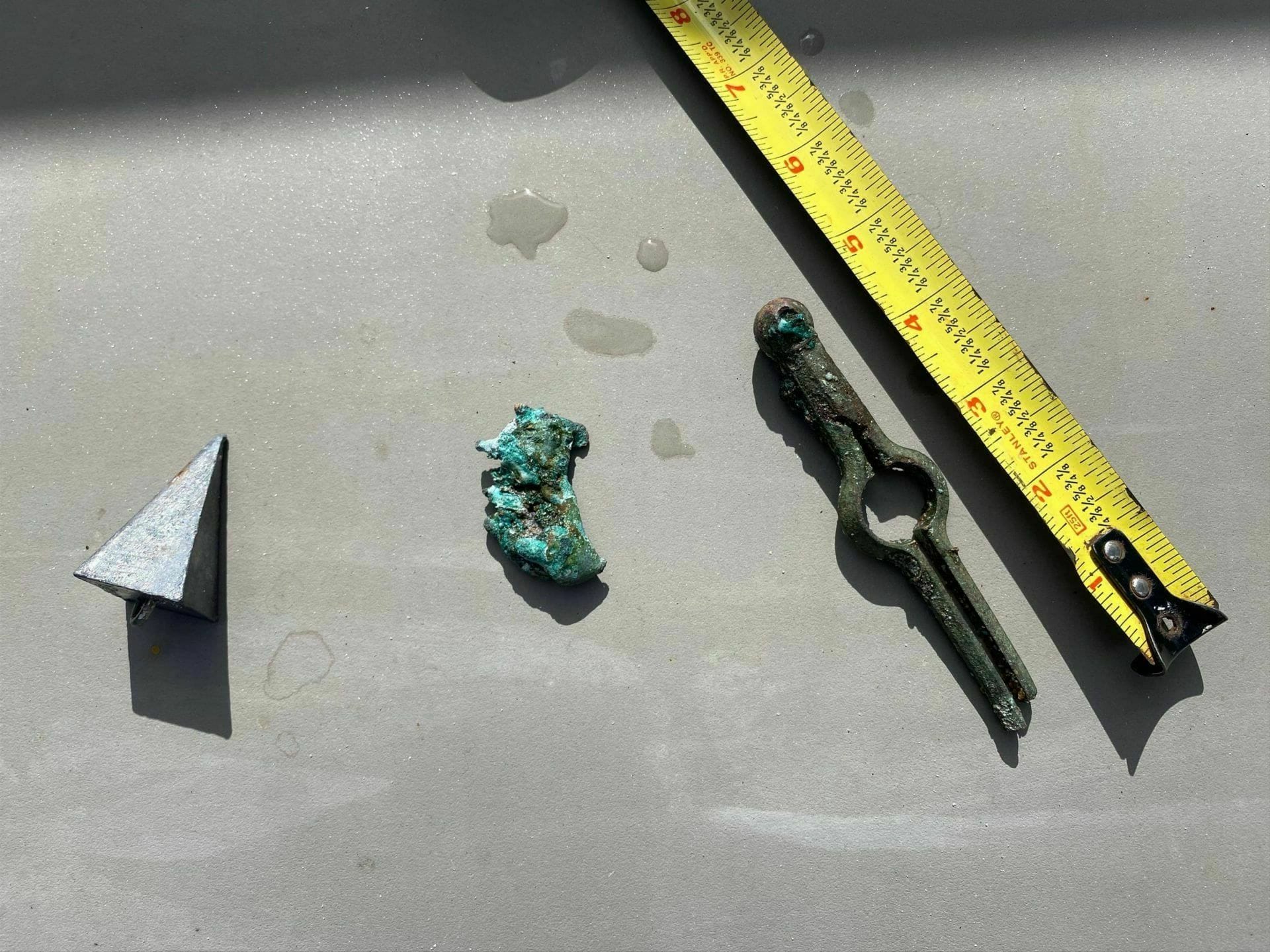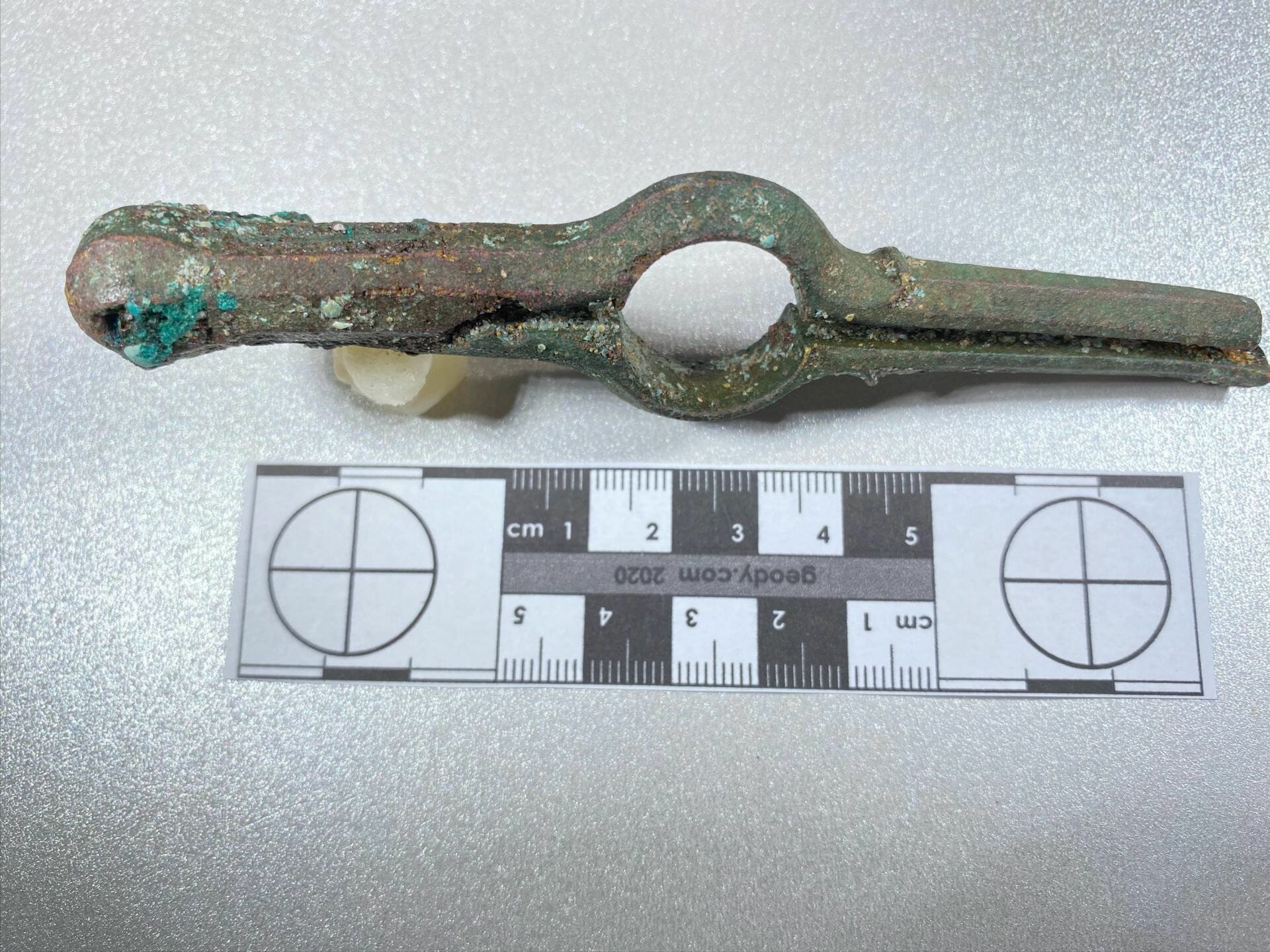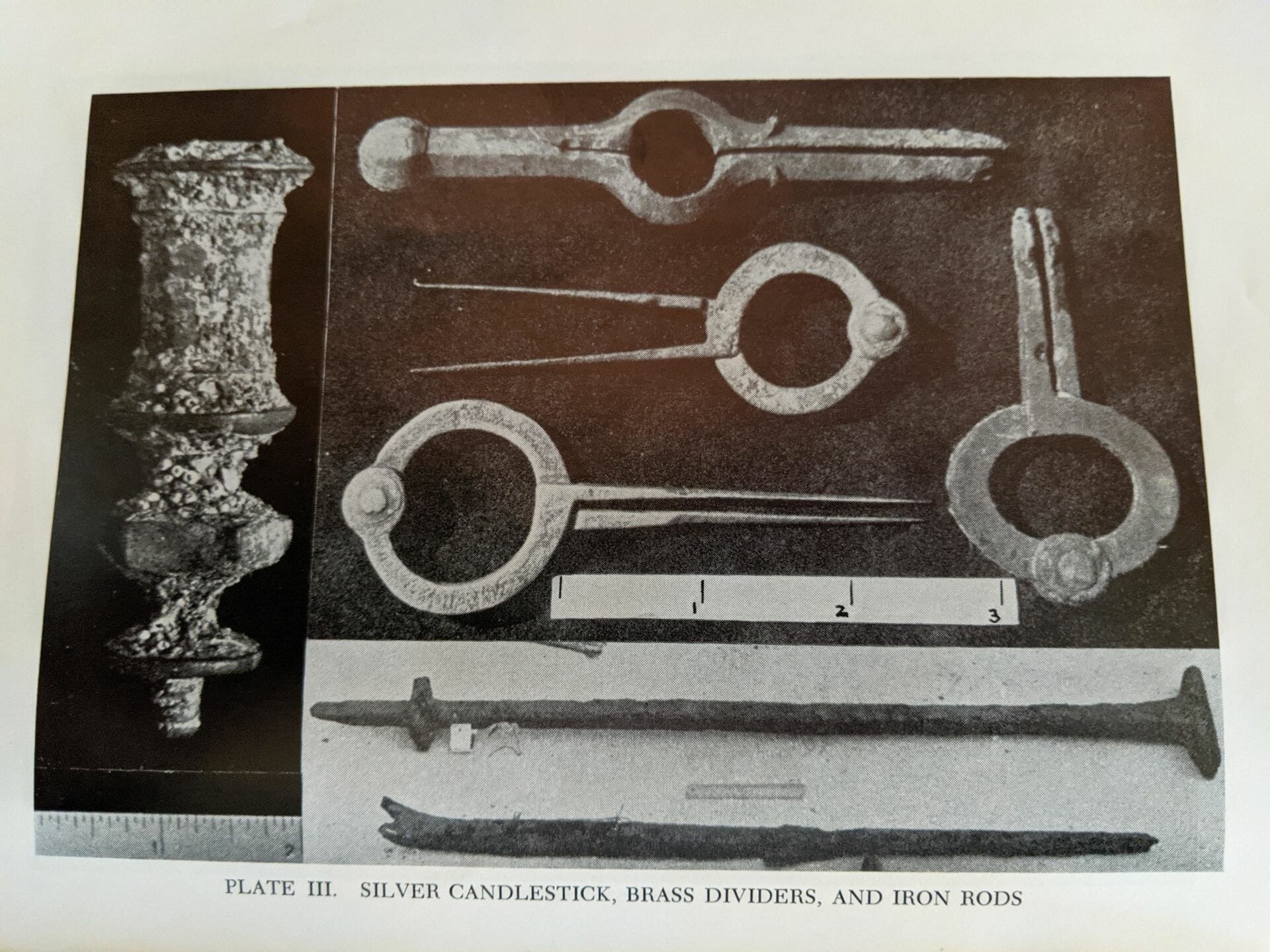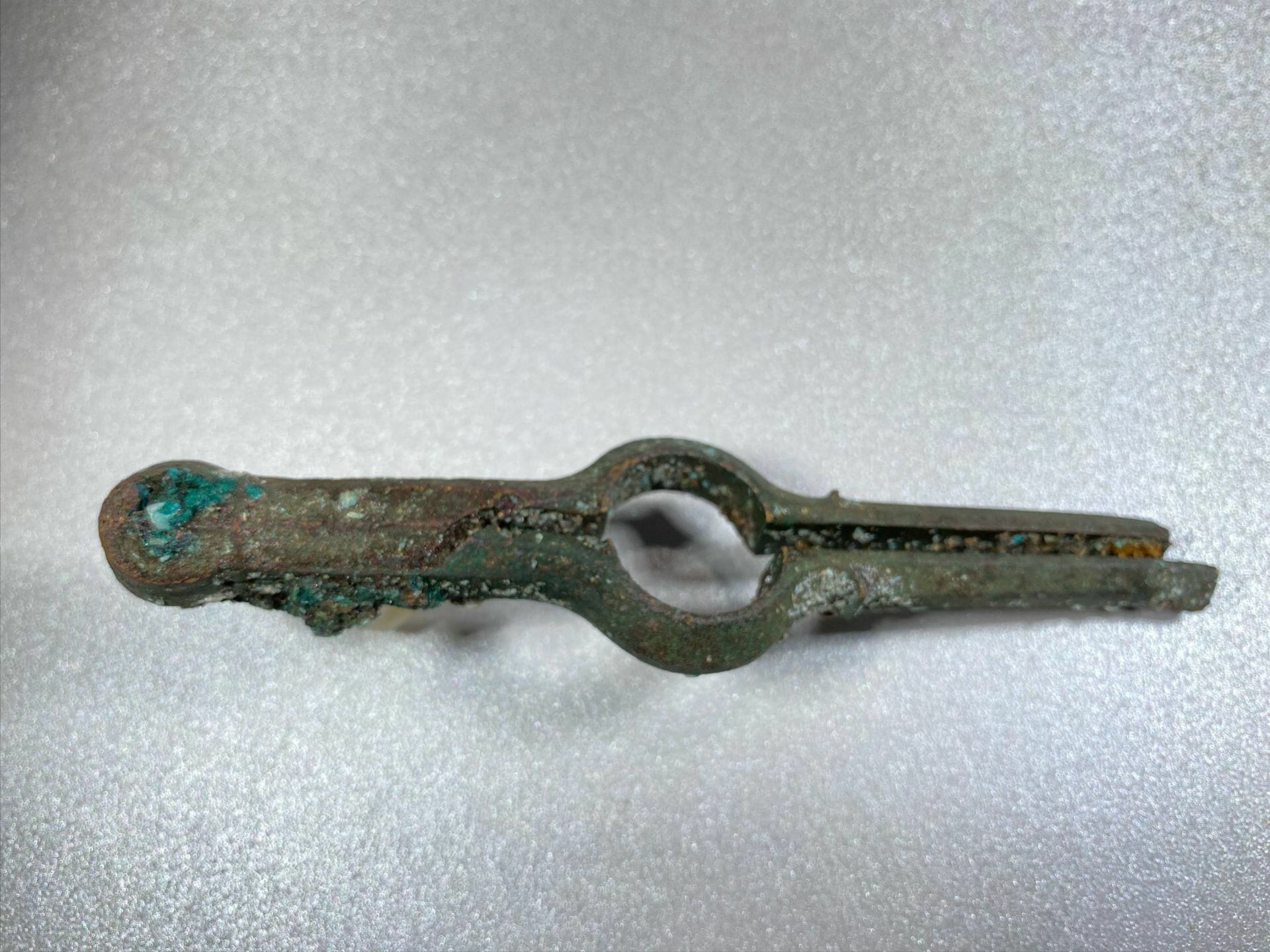Recently I was contacted by Fleet Society member Dale Justice (membership #103) regarding an interesting item he found just north of Vero Beach.
Dale is an accomplished beach hunter who has hunted area beaches for many years looking for relics that might be revealed after a strong storm. In December of 2020 he was searching an area between Wabasso and Corrigan’s Beach just north of Turtle Trail. After three days of strong south winds the beach had been eroded to the point that he felt it might present an opportunity to find something interesting.
After arriving at his chosen location Dale began his search. He managed to recover a few items of dubious value ( a large pyramid sinker and a lump of copper slag ) when he spotted a greenish object. At first glance, it appeared to be a large hitch pin. But upon close inspection what he saw was a pair of brass navigational dividers. Navigational dividers were used by mariners to measure distances on a navigational chart.

Made of bronze or brass (either metal is resistant to corrosion at sea) navigational dividers came in several styles. The most basic pair had two pointed metallic armsInsignia of a family or country, containing specific figures and colors and passed along through hereditary lineage. joined together with a hinge on one end. Other styles had a ball-hinge, or a bow-hinge, or were a hybrid of the styles and contained both a ball-hinge and bow-hinge (see image below). Dale’s recent find is of the hybrid variety. Just shy of 5 inches in length this item is likely made of brass. It shows evidence of encrustation which is common with items that have spent centuries in the ocean.


The image above is from an article written by Carl J Clauson in 1965 entitled “A 1715 Spanish Treasure Ship “ which was published by the University of Florida, Gainesville. This image depicts navigational dividers that were found during the summer of 1964 at a 1715 Fleet wreck site known as the “Douglass Beach WreckA 1715 Fleet wreck site located a few miles south of the Fort Pierce Inlet. It is often referred to by its old name, “Colored Beach.” In some early Real Eight Company correspondence, it was referr... More” and designated SL-17 in the statewide archaeological site numbering system. The wreck site is located approximately three nautical miles south of the Fort Pierce inlet.
At that site, four pairs of brass navigational dividers were retrieved and are pictured above. Three of these examples show the bow-hinge design which has opposing bows on each of the armsInsignia of a family or country, containing specific figures and colors and passed along through hereditary lineage. located at the head of the instrument and containing a pinned-hinge.
The fourth pair depicted in the image is strikingly similar to that found by Dale just north of Vero Beach. It appears to be of the hybrid variety containing elements of both the ball-hinge and bow-hinge styles. A pair of navigational dividers of this design was previously recovered from the H.M.S. Winchester which sank in the Florida Keys in 1695. So it is apparent that this “hybrid” design predated the 1715 fleet.
The interesting thing about Dale’s find is its location. Although it was found in an area where Fleet-related material has been recovered previously, it also is located near the wreck site of the Spring of Whitby. This ship of British origin sank in 1824. The proximity to Dale’s beach discovery calls into question the source of the navigational divider’s origin. Were the dividers found by Dale from the 1715 Fleet or from the Spring of Whitby which is also located nearby?
The history of navigational dividers, their design, and evolutionary development would require much more extensive research and detail than has been devoted to this article. Our purpose was to provide some background information to give the story of Dale’s find some context. To read more about navigational dividers see Ernie Richards’ article “Introduction to Navigational Dividers” in the Plus Ultra Newsletter ( 1st Quarter 2005, pp. 1-3 ). Also, a fine example of a bow-hinged navigational divider can be seen by accessing Our Treasure of the Month for September 2014.
